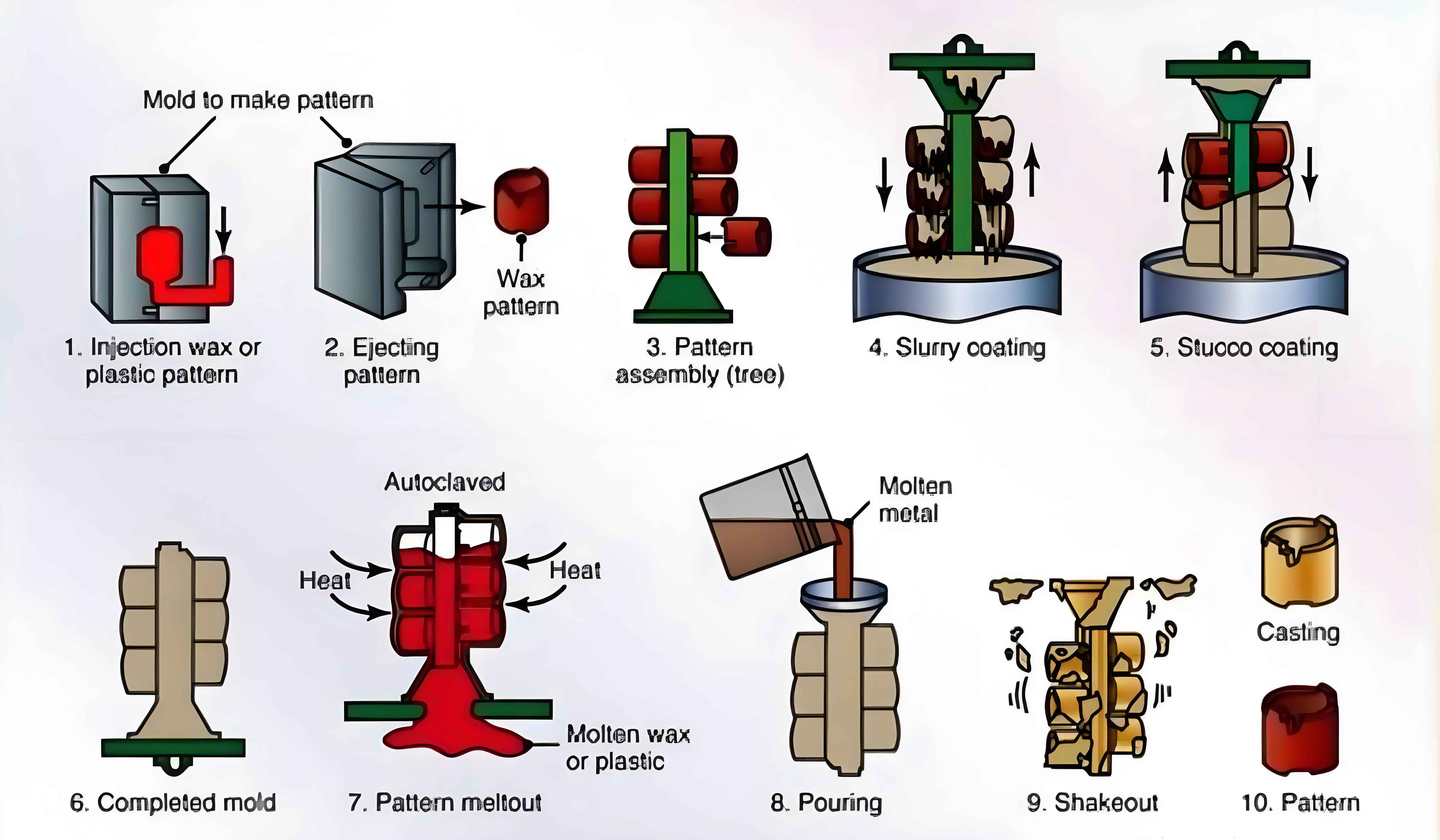
Introduction
Investment casting is widely used in manufacturing components for industrial gas turbines, particularly those made from high-temperature alloys. These materials, designed to withstand extreme temperatures and stresses, present unique challenges during the investment casting process. This analysis explores the primary challenges and potential solutions in the investment casting of high-temperature alloys for industrial gas turbines.
Challenges
- High Melting Points:
- Challenge: High-temperature alloys, such as superalloys, have high melting points, making them difficult to cast.
- Solution: Use of advanced furnaces with higher melting capabilities and specialized refractory materials for molds to withstand extreme temperatures.
- Thermal Fatigue and Creep Resistance:
- Challenge: Ensuring the cast components can resist thermal fatigue and creep under operational conditions.
- Solution: Development of alloys with optimized compositions and microstructures that enhance resistance to thermal fatigue and creep.
- Oxidation and Corrosion:
- Challenge: High-temperature environments accelerate oxidation and corrosion, which can degrade material properties.
- Solution: Application of protective coatings and the use of alloying elements such as chromium and aluminum to form stable oxide layers that protect the surface.
- Complex Geometries:
- Challenge: Gas turbine components often have intricate geometries, including thin walls and complex internal passages, which are difficult to cast accurately.
- Solution: Advanced mold-making techniques, including the use of ceramic cores and 3D printing technologies to create precise and complex mold structures.
- Segregation and Defects:
- Challenge: High-temperature alloys are prone to segregation and the formation of defects such as porosity and shrinkage.
- Solution: Controlled solidification processes, including directional solidification and single-crystal investment casting, to minimize segregation and defects.
- Post-Casting Heat Treatment:
- Challenge: Achieving the desired microstructure and mechanical properties often requires precise heat treatment processes.
- Solution: Development of specialized heat treatment cycles tailored to specific alloy compositions to optimize properties such as strength, ductility, and creep resistance.
Solutions and Innovations
- Advanced Furnace Technologies:
- Development of vacuum induction melting (VIM) and vacuum arc remelting (VAR) furnaces to achieve the necessary temperatures and control the alloy composition precisely.
- Innovative Mold Materials:
- Use of high-performance ceramic materials and coatings to improve mold durability and reduce contamination.
- Implementation of rapid prototyping and additive manufacturing for mold production to achieve complex geometries and reduce lead times.
- Improved Alloy Compositions:
- Research and development of new superalloys with better investment casting characteristics and high-temperature performance.
- Addition of elements like rhenium and ruthenium to enhance high-temperature strength and oxidation resistance.
- Directional Solidification and Single-Crystal Techniques:
- Techniques such as directional solidification (DS) and single-crystal (SX) investment casting to produce components with superior mechanical properties by eliminating grain boundaries that are prone to creep and fatigue.
- Protective Coatings:
- Development and application of thermal barrier coatings (TBCs) and oxidation-resistant coatings to protect the components from high-temperature degradation.
- Use of diffusion coatings like aluminide and MCrAlY (metal-chromium-aluminum-yttrium) to form protective oxide layers.
- Advanced Simulation and Modeling:
- Use of computational fluid dynamics (CFD) and finite element analysis (FEA) to simulate the investment casting process, predict defects, and optimize mold design and process parameters.
- Quality Control and Inspection:
- Implementation of advanced non-destructive testing (NDT) methods such as X-ray radiography, computed tomography (CT) scanning, and ultrasonic testing to detect internal defects.
- Real-time monitoring and control of the investment casting process using sensors and automated systems to ensure consistency and quality.
Conclusion
Investment casting of high-temperature alloys for industrial gas turbines involves addressing significant challenges related to material properties, investment casting complexity, and operational demands. Through advancements in furnace technology, mold materials, alloy composition, and investment casting techniques, as well as the application of protective coatings and advanced simulation tools, these challenges can be effectively managed. Continuous research and innovation are essential to further enhance the reliability and performance of gas turbine components manufactured through investment casting.
